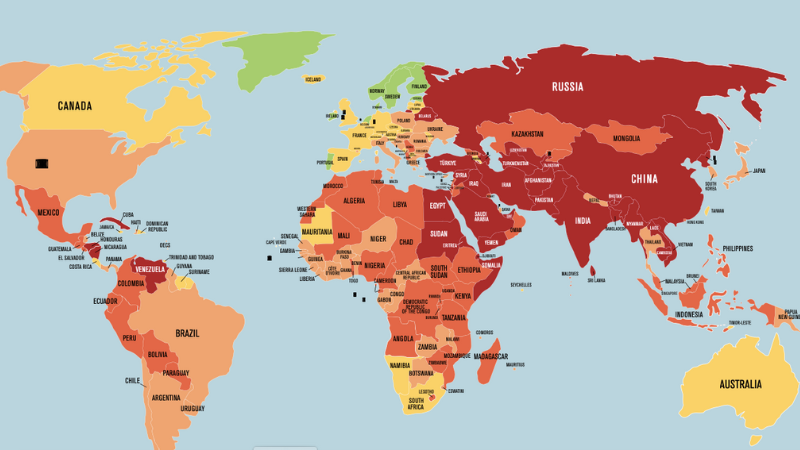While both men and women in journalism and politics are at risk of being abused, the violence women face is gendered and often sexual. This leads to a situation where women are discouraged from entering the public sphere and prevents them from partaking in democratic activities, according to a report by the OSCE PA Special Representative on Gender Issues.
The study, entitled ‘Violence Against Women Journalists and Politicians: A Growing Crisis’, found that the perpetrators, who are overwhelmingly male, often focus on matters unrelated to female journalists’ or politicians’ work. Instead, they target “intellect, personal relationships, professional credentials, and ‘likability’”.
This urgent problem was also recently highlighted by Caroline Muscat, founder and managing editor of The Shift News, in a presentation she gave to the International Press Institute’s World Congress in Vienna in September, which detailed the way in which assassinated journalist Daphne Caruana Galizia was vilified and dehumanised in the years before her murder by hate groups with direct links to the government.
Indeed, the OSCE report found that this is a growing problem and is linked to general democratic backsliding and a rise in authoritarianism.
It also said that the phenomenon is exacerbated by “a resurgence of patriarchal values, with devastating effects on gender equality”. These are fuelled by leaders with authoritarian leanings who encourage misogyny to divide and cultivate fear.
One example presented was Hungary and Poland, which in 2021 got “gender equality” removed from an EU social summit in Portugal. Additionally, in March, Turkey left the Istanbul Convention, a legally binding instrument to protect women from violence. Furthermore, in Russia, the report said, a number of domestic violence laws have been scaled back, leaving women more vulnerable than ever before.
One of the prevailing issues is that of toxic masculinity that is present from childhood. This leads men to “believe that they should control the public sphere and that women with influence undermine mens identity and role in society,” the report found.
This has been reflected in a growing number of attacks and violations against female journalists and politicians. Thanks to the growth of the internet and social media, a space has been created where gender-based online violence can flourish. Women are also more likely to experience it than their male counterparts.
“Women and girls are at greater risk of experiencing cyberviolence, especially severe types of harassment and sexualised online abuse and this form of violence is tied to larger social problems of sexism and misogyny.”
Online violence against women has several unique features, according to the report. It is relentless, anonymous, and attackers are less inhibited than they would be offline. Furthermore, the audience that witnesses the abuse is potentially huge. Once the content is posted online, it becomes a part of their permanent online identity and is almost impossible to erase.
The OSCE defines online violence against women as harassment and spamming, cyberstalking, revenge porn, disinformation campaigns, and doxing.
A serious matter of concern highlighted in the report is the increase in attacks on journalists and media freedom in recent years. In particular, “increasingly hostile political rhetoric towards the media,” combined with violence and impunity, creates a problematic situation.
But according to reports from the Coalition For Women In Journalism, cited by the report, attacks on women are increasing at an even higher rate. In the first quarter of 2021, the Coalition reported 348 cases of violence and threats against women journalists.
“Women journalists are facing additional risks compared to their male counterparts. This gendered violence takes myriad forms, ranging from physical and sexual violence to workplace discrimination to misogynistic online threat and harassment,” it notes.
In terms of online violence, the OSCE reported that in 2020, almost three-quarters of surveyed women journalists said they had experienced online violence. Even more concerningly, 20% of women attacked online said they experienced offline violence connected to it.
The impact of these attacks is vast and can “negatively impact a person’s mental health and wellbeing.” Symptoms include flashbacks, self-blame, PTSD, isolation and problems sleeping
The reported noted that while recognition for this type of violence grows, the full scale is underestimated.
“Many women do not report the violence they experience to their supervisors or the police, often because of stigma and anticipation of negative professional consequences, such as being denied assignments in the future,” it found.
In terms of the topics that trigger the most abuse, politics was one of the most common. In particular, criticism of the government and political responses to migration, religion, feminism and terrorism were particularly problematic.
The consequences of this issue means that many women journalists consider leaving the profession or changing beat. According to one survey cited by the report, 37% said they avoided certain topics, 29% considered leaving the profession, and 16% requested transfer to a different beat.
In conclusion, the OSCE report said that this situation means a less inclusive and diverse debate that impacts the public’s right to pluralistic information, democracy, and sustainable development.












